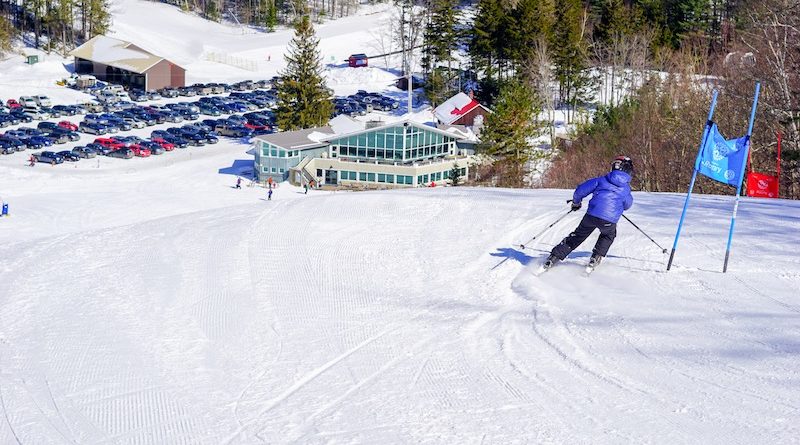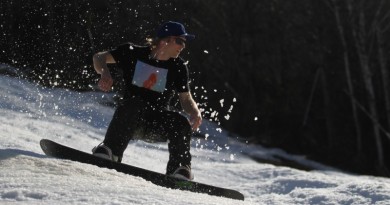The Little Ski Area Where Dreams of Medals Are Born
As a kid growing up skiing at the Middlebury College Snow Bowl, Doug Lewis already had his eyes set on the Olympics.
BY DOUG LEWIS
Some of my earliest memories are of being in the ski lodge at the Middlebury College Snow Bowl, warming my toes by the huge stone fireplace surrounded by friends and family. We lived in Middlebury and my mom was a ski instructor at the Snow Bowl so my two brothers, my sister and I got to ski while she worked.
I was on skis by age three, part of the Junior Racing Club by age seven and had my sights set on the Olympics by age nine. The Snow Bowl had everything that I needed to become a champion; the snow, the terrain, the program, the competition, and a group of kids focused on skiing every inch of the mountain from before the lifts open until the family station wagon was leaving the parking lot.
My siblings and I were part of the Snow Bowl’s junior racing club, headed up by Howard Kelton and part of the Mid-Vermont Council. The group’s ages ranged from 7 to 17 and it seemed like
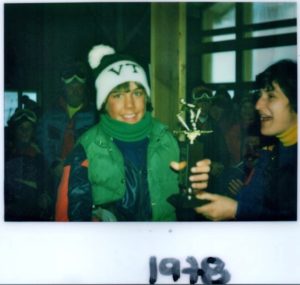
every family had at least three kids in the program. We did everything together. We explored the mountain together. We trained together. We traveled to races together. We ended each day playing in the river (often in our ski boots) together. We got in trouble together. All without any supervision from our parents who were out skiing themselves or, more likely, enjoying a cocktail on the deck.
With no snowmaking back then and limited grooming, the Snow Bowl offered up a challenge at every turn, every day on every trail. As a kid learning to ski in Vermont in the late ‘60s and ‘70s, you had to learn how to ski over ice, moguls, crud, and often grass and rocks. It seemed like every turn was a test of agility and balance. You also skied on alert as you never knew what was under that next knoll or around the corner. In fact, there was a porcupine that hung out on one of the trails each winter, an obstacle to definitely avoid.
We skied only about 60 percent of the time on the groomed trails. The rest of the time, we were in the woods screaming (literally and loudly) through the trees on skinny, winding, rollercoaster tracks. Some of the best of these secret trails were the Proctor-Ross-Allen which connected all three trails off of the top of the mountain, and the myriad of woods trails off of the Lang Poma (now a chairlift). The most extreme woods trails were the ones off the back that were on either side of the old Bailey Falls Poma. However, those trails were only for the “older’ kids, as you could get lost back there, or so the rumors were.
Skiing in ever-changing conditions and in the woods honed my skills. I learned to look ahead, read terrain and make quick decisions. Those mental skills translated into being able to carve, hop, slide, jump and sometimes stop at a moment’s notice. Add in the fact that we travelled in packs of 10 skiers at a time, often separated by just inches, and it became a real-life video game where crashing into each other and trees happened a lot—usually accompanied by fits of laughter and a few minutes spent trying to find everyone’s equipment (not as hard back then as we all wore safety straps).
Of course, there were famous (and infamous) challenges that you had to do to be part of the cool
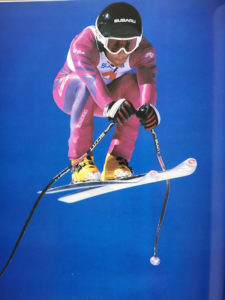
group of skiers. There was the “Cliff” in the middle of the Allen. You had to have the perfect line to make sure you didn’t land in the trees. You had to have the speed to clear the rocks. You had to put in that little extra jump to make it look cool. It all had to happen with perfect symmetry and timing.
I remember standing on top of it, staring over the lip into the abyss and trying to get my nerve up to huck it. My friends were screaming at me to go for it. “Come on Lewie, just go!!! Hurry up!” Then I would take a deep breath and send it.
The elation and energy and joy I got every time I took that cliff built up my confidence that I could do anything. This proved useful many years later when I stood in the starting gate of Kitzbuhel’s Hannenkahm race and my coach would echo my friends: “Come on Lewie, go for it!!!”
Another rite of passage was jumping off of the 55-meter Nordic ski jump the college used at the college winter carnivals. You had to take a short trail through the woods to get to the jumps and then climb the in-run while hiding from the ski patrol. This was the real deal. It was a dangerous, crazy thing to do on alpine skis, especially when it was against the rules. If you got caught they would take your pass. So, when we were all staged at the top, we would take it, one right after the other, and then immediately disperse and hide. Usually the only kids who got caught were the ones who fell and had to pick up their equipment strewn all over the outrun.
Finally, one of our favorite things to do was to bomb the Voter Trail which started at the very top of the mountain and wound its way down to the very bottom. At the top were tight corners and a few steep spots, but the key to winning was having speed across the long flat section at the bottom.
Since I was always pretty small, the key for me was to hang out in the back until the final corner into the flats, and then carry more speed across the flats and draft off the bigger skiers. And, of course, if you could grab onto someone’s pole and slingshot off it, that helped as well.
The cherry on top was taking the huge jump at the very bottom and pulling a sweet spread eagle into the finish as the winner. I won this race quite a few times in my tenure there and I swear it played a big role in me becoming one of the fastest gliders in the world. I learned how to get my skis flatter and generate more speed across the flats of World Cup races better than almost anyone on the planet.
I still thank Middlebury College Snow Bowl and the awesome group of junior racers I grew up with on that mountain, for starting what became a career in skiing. I hope that maybe another one of the kids who is still meeting up every weekend at the Bowl and exploring every inch of the mountain—racing from top to bottom, and laughing the entire way—will end up in the starting gate of the Olympics one day.
For “The Insider’s Guide to the Middlebury Snow Bowl” today, head here.
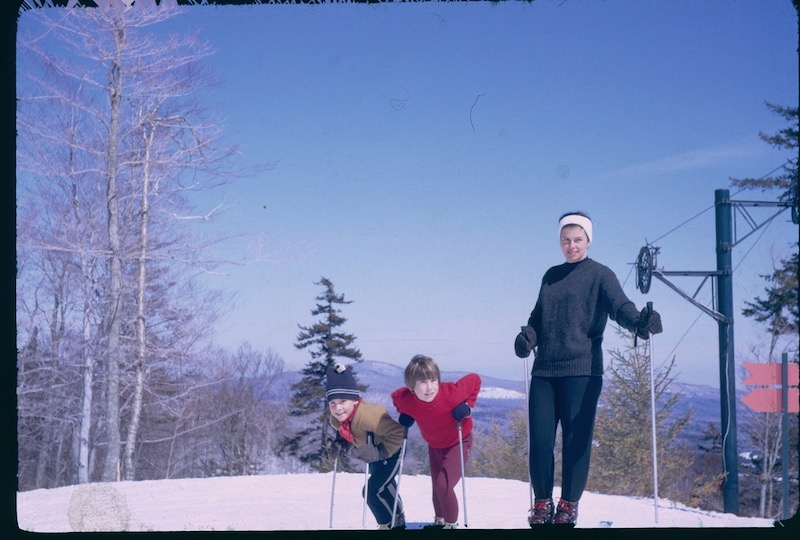
Doug Lewis, recently inducted in the Vermont Ski & Snowboard Museum Hall of Fame, competed in the 1984 and 1988 Olympics and was a bronze medalist in downhill at the 1985 World Championships. He currently serves as a broadcaster and analyst for a number of TV networks and commentator for the Killington World Cup. Doug and his wife Kelley run ELITEAM training camps (www.eliteam.com) for kids each summer in Waitsfield, Vt.
Featured Photo Caption: A skier carves through gates on Allen at the Middlebury College Snow Bowl. Photo courtesy Middlebury Snow Bowl.

